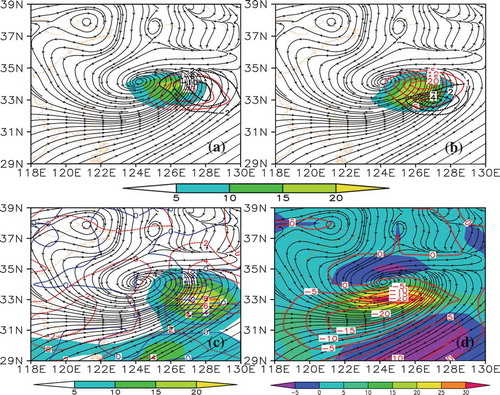Figures & data

Figure 1. Schematic illustration of the conversion from horizontal helicity to vertical helicity, where the ellipse stands for the circulation associated with , the thick solid arrow is meridional wind, short dashed arrows are vertical wind, the long dashed vector is the horizontal gradient of vertical KE, thin solid vectors stand for zonal wind, and the dashed curved vector represents the tilting direction of the horizontal vorticity vector.

Figure 2. Schematic illustration of term H2, where the solid line is the isobar, the dotted line is isosteric, the dashed circle is the circulation caused by the solenoid, thin vectors are gradients of pressure as well as specific volume, and ☉ stands for the solenoid which points out of the paper.

Figure 3. Terms of the vertical and horizontal helicity budget equations at 900 hPa during the mature stage (1800 UTC 3 July 2007) of a meso-α-scale vortex, where the solid line is the stream line. The shading in (a) is vertical helicity (units: 10−6 m s−2), the black dashed lines are term Z2 (units: 10−12 m s−3), and the red solid lines are term Z3 (units: 10−11 m s−3). The shading in (b) is term Z1 (units: 10−10 m s−2), the black dashed lines are term CON (units: 10−10 m s−3), and the red solid lines are term Z4 (units: 10−10 m s−3). The shading in (c) is horizontal helicity (units: 10−2 m s−2), the red dashed lines are term H1 (units: 10−6 m s−3), and the blue solid lines are term H3 (units: 10−6 m s−3). The shading in (d) is term H4 (units: 10−6 m s−3), and the red solid lines are term H2 (units: 10−6 m s−3).

